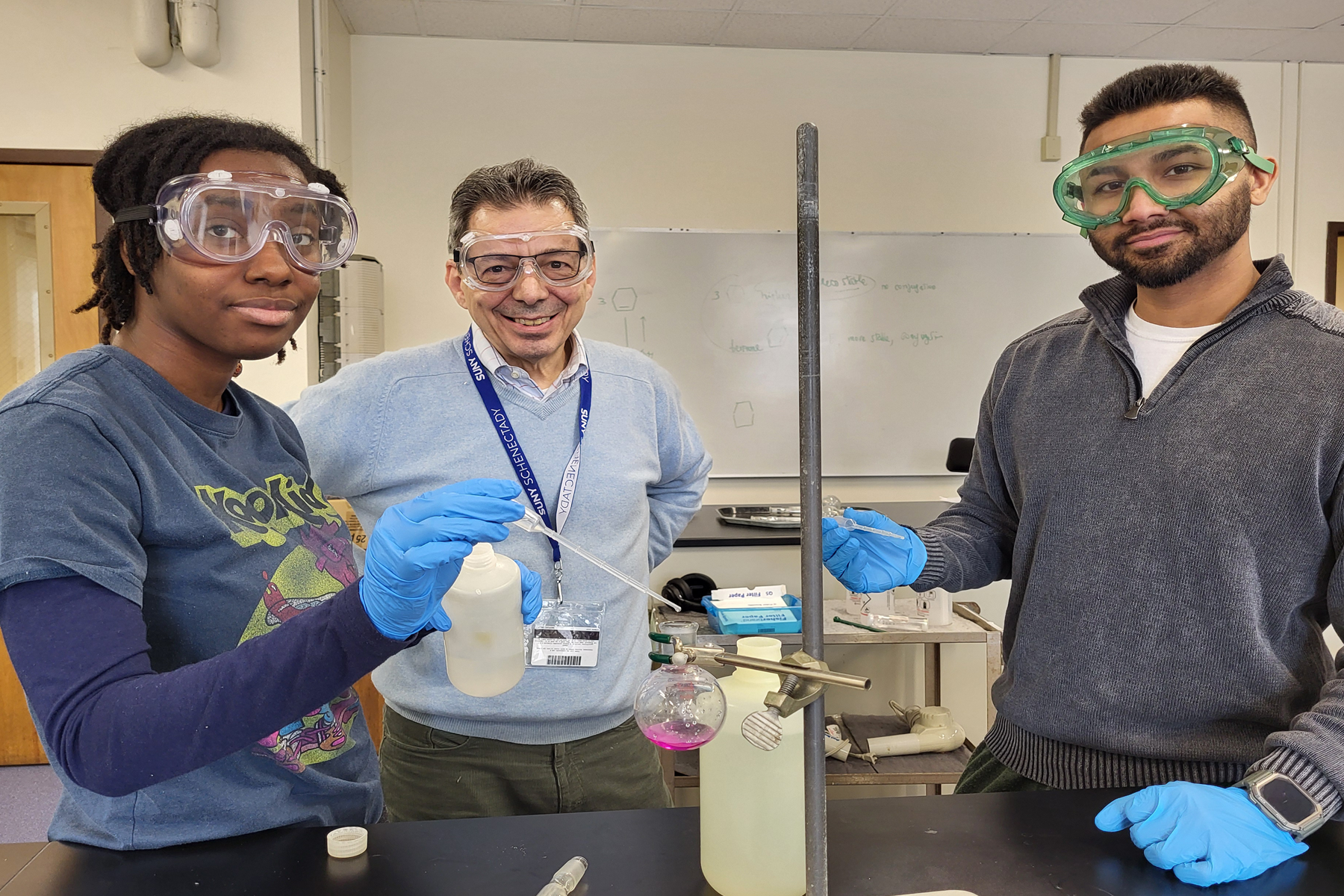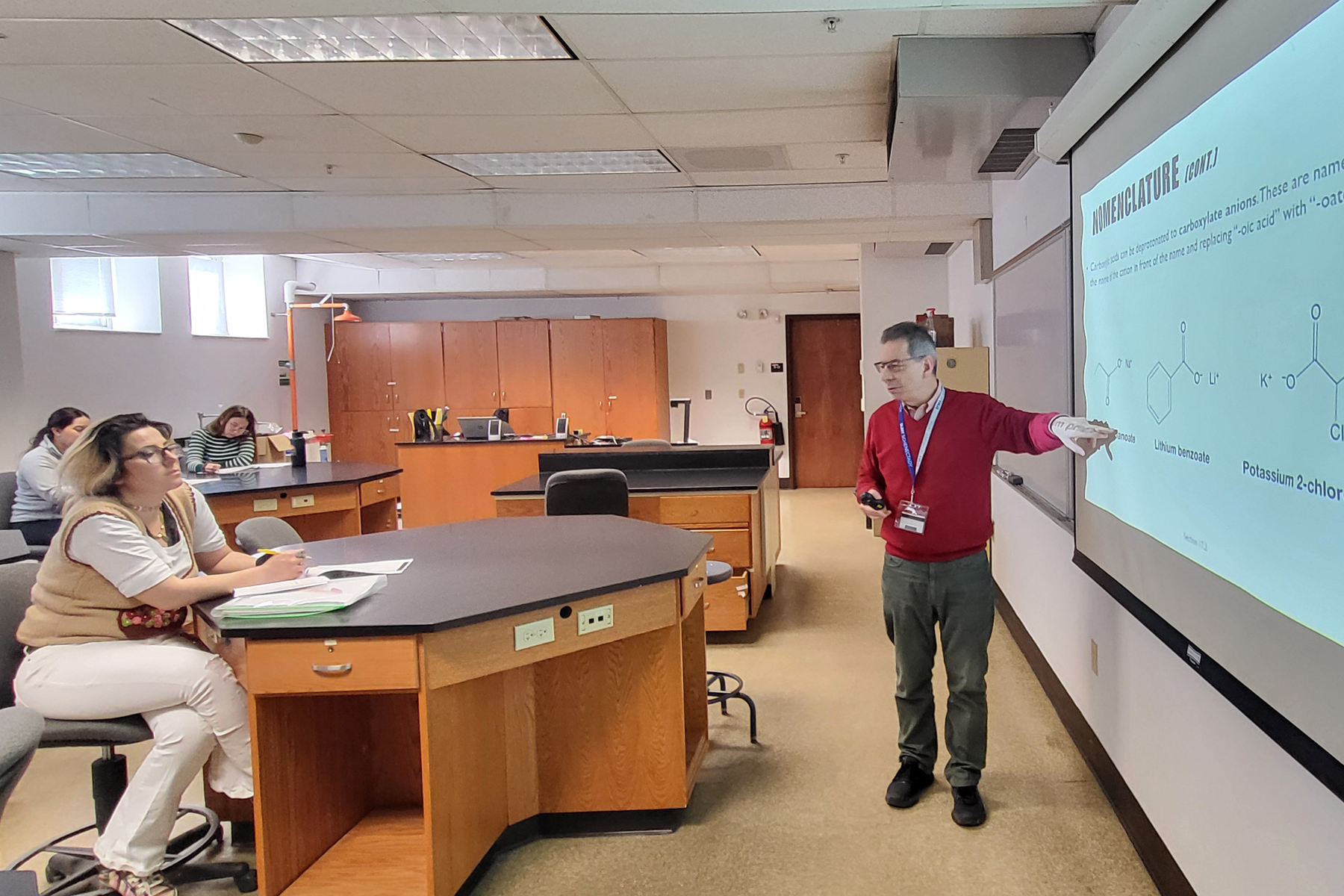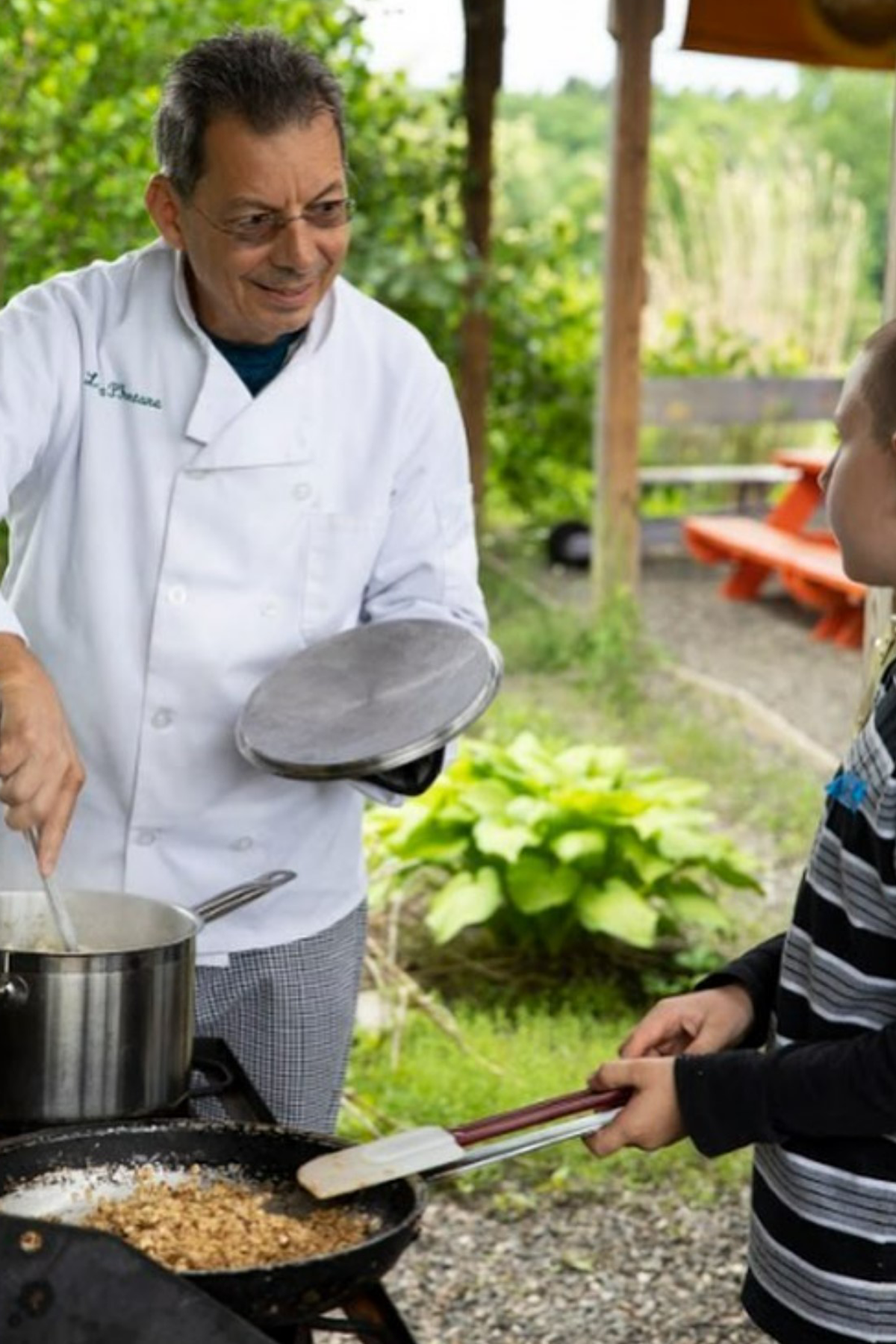Between Classes With…Dr. Luca Fontana, Science Faculty Member

Dr. Luca Fontana, with Science majors Najel Bowen and Abhishek Sharma, during a recent Organic Chemistry Lab.
Dr. Luca Fontana is modest when he discusses his background working in the research and development industry, but the former vice president of global technology, chief technology officer, chemist, and research, technology, and innovation consultant, was the main inventor or co-inventor on 25 U.S. patents. He retired from the chemical industry to pursue his second love: food, earning his degree in culinary arts/chef training from the Culinary Institute of America, and afterward he began teaching chemistry.
Dr. Fontana, who has been teaching Chemistry at SUNY Schenectady for the past six years, will be the keynote speaker during STEM Day (“Planet vs. Plastics”) on April 24.
This year’s theme for STEM Day is “Planet vs. Plastics.” How will your keynote remarks address this?
“Most plastic is petroleum based, so it’s not sustainable, as often recyclability is a challenge, and it is not biodegradable. I’ll talk about ways that we should try to reduce, reuse, and recycle minimizing the use of primary resources and rationalizing the plastic portfolio in each market. The U.S. actually has a lot to learn from Europe when it comes to recycling. Comingled recycling in this country is more consumer friendly, but not always the best option. People should take the time to put glass in one container, plastics in another, metals in another.
Every plastic has a unique challenge. The main culprits are single use plastics, especially in the packaging sector, made of polymers that degrade upon remelting or items that cannot be recycled because they are a mix of different molecules. Polyethylene terephthalate (PET) bottles are really the only true globally successful recycling effort. For many other polymers the post-consumer/post-industrial recovery effort remains a huge challenge.
We also have to reduce those plastics that accumulate in the environment. It has been shown that 97% of Americans have PFAS (perfluoroalkyl substances) in their blood. PFOA has been eliminated from Teflon® resins, but its phase out needs to continue. Waterproof coatings of clothes and shoes continue to show up in our water system. In the kitchen people are returning to cast iron and greener types of pan coatings."

You describe a “love/hate” relationship with plastic.
"New strategies need to be developed to prevent plastic pollution on land and in our oceans. Perhaps chemical recycling of plastics back to small molecules is an option.
At the same time, we need to remember the positive aspects of plastic though. In the automotive sector, before hybrid and electric motors, gas mileage efficiency was primarily obtained by replacing heavier metal and glass parts with lightweight plastics. Head lamps switched from glass to plastic, bumpers from steel to plastic. That’s less weight, so cars can travel further on the same amount of gas. Plastic has made our medical sector so much more efficient, for example, with high performance plastic parts used in in many applications.”
You were the inventor or co-inventor on products with more than 25 U.S. patents. Tell us about one of them.
“When I was working in research and development at the Plastics Division of General Electric, my boss gave me the challenge to come up with a new plastic that would be more easily processed, while retaining toughness and clarity. Sometimes you hit the right kind of chemistry, and a little bit of luck, and I came up with a new process to make a modified composition, adding some different molecules. After a couple of years working together with a team, we came up with a product which was introduced in the early 1990s for the early Motorola Flip phone, with a thin cover for the dial pad. That same composition was later used in the IBM ThinkPad 701 with the 'Butterfly' keyboard, as well as night vision goggles used by the military.”

Dr. Fontana doing his externship at The Sylvia Center at Katchkie Farm while he was
a student at the Culinary Institute of America.
After working in research and development, you began teaching Chemistry and now Food Science.
“Yes, I always had a passion for teaching. My goal as an educator is to get students excited about the sciences. I like to see their curiosity about understanding how things work, whether it’s physical science or biological science. I let them know that if they choose to be a scientist, researcher, technician, for example, you have an opportunity to make an impact. This fall has been very special because for the first time I’ve gotten to teach Food Science. So my two passions are coming together, teaching about the chemistry of food.”